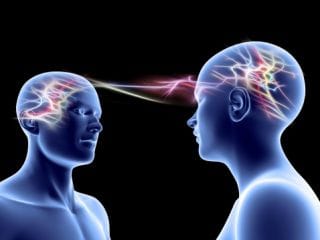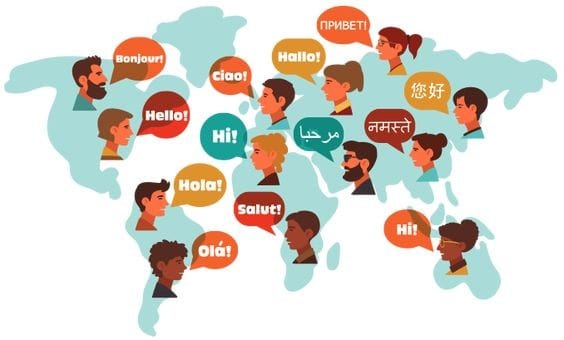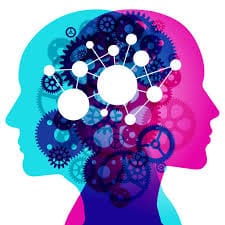The Neuroscience of Sharing: What Happens in Our Brains When We Share

Have you ever wondered why sharing your thoughts, experiences, and emotions feels so relieving? Or why keeping a journal can be so therapeutic? The answer lies in the fascinating world of neuroscience. Our brains are wired for connection and sharing, and understanding these neural mechanisms can help us harness the power of journalling and sharing to improve our mental wellbeing.
The Brain's Reward System Lights Up
When we share our experiences with others, our brain's reward system activates in remarkable ways. The ventral striatum and ventral tegmental area—regions associated with pleasure and reward—release dopamine, creating feelings of satisfaction similar to when we eat delicious food or receive a compliment.
Research using functional magnetic resonance imaging (fMRI) shows that the act of sharing information activates the same neural pathways as primary rewards like food and money. This helps explain why social media platforms have become so addictive—each time we share a post and receive engagement, our brains reward us with a small dose of feel-good neurochemicals.
But sharing goes beyond digital platforms. When we journal our thoughts and later share these reflections with trusted individuals, the neural reward is amplified and sustained, creating more meaningful connections than superficial online interactions.
Stress Reduction Through Expression
Keeping thoughts and emotions bottled up creates cognitive load. Our prefrontal cortex—responsible for executive functions like decision-making and emotional regulation—becomes overwhelmed when we suppress our feelings.
Journalling provides a powerful outlet for this cognitive burden. When we write down our thoughts, the amygdala (our brain's emotional processing centre) shows decreased activity while the prefrontal cortex demonstrates increased organisation and efficiency. This neural shift explains why many people report feeling "lighter" after writing in their journals.
Dr. Matthew Lieberman, a neuroscientist at UCLA, describes this as "affect labelling"—the process of putting feelings into words. His research demonstrates that when we label our emotions through writing or speaking, we dampen the brain's emotional response, making difficult feelings more manageable.
Mirror Neurons and Empathic Connection
Perhaps one of the most fascinating aspects of sharing is how it activates our mirror neuron system—specialised brain cells that fire both when we perform an action and when we observe someone else performing the same action.
When we share our experiences and someone responds with understanding, our mirror neurons create a neural resonance between us. This biological mechanism underpins empathy and explains why sharing can make us feel deeply understood and connected.
Regular journalling followed by selective sharing creates opportunities for these empathic neural connections. By first processing our experiences through writing and then sharing them in supportive environments, we maximise the brain's natural capacity for social bonding.
The Default Mode Network: Self-Reflection and Narrative
The default mode network (DMN) is a collection of brain regions that activate when we're not focused on the external world. It plays a crucial role in self-reflection, autobiographical memory, and creating personal narratives.
When we journal, we engage this network, helping us make sense of our experiences and integrate them into our life story. According to neuroscientists, a coherent personal narrative is essential for psychological wellbeing, and journalling strengthens the neural pathways that support this narrative construction.
Sharing our journal reflections further reinforces these pathways, as articulating our thoughts to others requires additional cognitive processing. This helps explain why support groups and therapy sessions that encourage sharing personal narratives can be so effective—they're literally helping rewire our brains toward healthier patterns.
Brain Plasticity and Growth Through Vulnerability
Our brains possess remarkable plasticity—the ability to reorganise neural connections throughout life. Vulnerability through sharing triggers growth in several key brain areas, including the anterior cingulate cortex (involved in emotional awareness) and the insula (central to interoception, our ability to sense our internal bodily states).
When we regularly journal and share, these brain regions develop stronger connections, enhancing our emotional intelligence and self-awareness. This neural growth translates to improved resilience in facing future challenges.
The Role of Journalling in Cognitive Processing
The act of journalling engages multiple cognitive processes that activate distinct neural pathways. Writing requires language processing (left hemisphere), emotional processing (limbic system), and the integration of these elements (corpus callosum).
This cross-brain activation helps explain why journalling can lead to "aha moments" and novel insights. By engaging multiple brain regions simultaneously, we forge new neural connections that might not form during everyday thinking.
The renowned neuropsychologist Dr. Sarah-Jayne Blakemore discusses this phenomenon in her influential book "Inventing Ourselves: The Secret Life of the Teenage Brain." She explains how externalising our thoughts through writing creates cognitive distance, allowing our brains to process information more objectively and creatively.
Social Connection as a Biological Need
Humans are inherently social creatures, and our brains reflect this evolutionary adaptation. The social pain of rejection activates the same neural circuits as physical pain, highlighting how fundamental connection is to our survival.
Regular journalling and sharing in supportive communities fulfils this biological need for connection. The popular podcast "Hidden Brain," hosted by Shankar Vedantam, explored this concept in depth in their episode "The Lonely American Man," discussing how expressing vulnerability through sharing can counteract the epidemic of loneliness—a condition associated with increased risk of numerous health problems.
Integrating Journalling and Sharing into Daily Life
Understanding these neurological benefits provides compelling reasons to incorporate journalling and sharing into our daily routines:
- Begin with private journalling to process raw emotions and experiences
- Identify supportive people or communities for selective sharing
- Practice both written and verbal expression
- Establish regular routines that incorporate both practices
- Remain open to the insights that emerge from this process
By following these steps, we can harness our brain's natural mechanisms for healing, growth, and connection.
Join Our Community of Sharers
Now that you understand the powerful neuroscience behind sharing, we invite you to put these insights into practice. At Sharings.Me, we've created an online journal and sharing community designed with these neurological principles in mind.
Our platform provides private journalling tools alongside options for selective sharing in supportive groups. Each feature is crafted to maximise the neural benefits discussed in this article, from dopamine-mediated reward to enhanced default mode network processing.
Whether you're working through personal challenges, seeking deeper connections, or simply curious about how sharing might transform your life, Sharings.Me offers a science-based approach to journalling and community.
Visit Sharings.Me today to begin your journey of neurologically-informed sharing, and experience firsthand how this practice can rewire your brain for greater wellbeing, resilience, and connection.
Keywords for SEO: neuroscience of sharing, brain reward system, journalling benefits, social connection brain, emotional processing neuroscience




